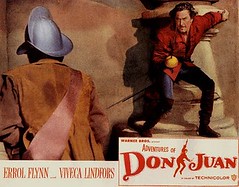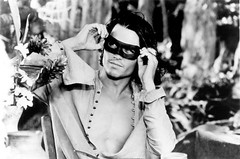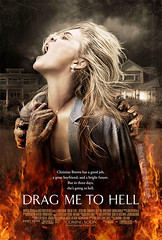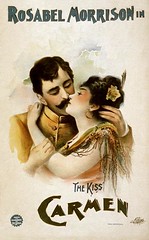Wed 31 Aug, 2011
DON JUAN
Comments (0) Filed under: Face Powder BoxesTags: Don Giovanni, Don Juan, Drag Me To Hell, Johnny Depp, Mozart, opera, Tirso de Molina
Who wouldn’t powder her nose in anticipation of a fling with the legendary libertine, Don Juan?
There have been countless tellings of the Don Juan legend; however, it is likely that it first appeared in print in Spain around 1630 as a play by Tirso de Molina. Molina’s output as a playwright was prodigious — he’s alleged to have composed over four hundred plays during a twenty year period! That is mind boggling!
Molina introduced the character of Don Juan in his play “El Burlador de Sevilla y convidado de piedra” (The Trickster of Seville and the Stone Guest).
The legend of Don Juan describes him as a rogue who enjoys seducing women (especially virgins) then dueling with their men. Hmm. How very macho. But that kind of bad behavior doesn’t come without a price.
 There appear to be several interpretations of the legend of Don Juan; the most common one is that Don Juan seduces a girl from a noble family. When the father seeks revenge on his daughter’s behalf, Don Juan kills him.
There appear to be several interpretations of the legend of Don Juan; the most common one is that Don Juan seduces a girl from a noble family. When the father seeks revenge on his daughter’s behalf, Don Juan kills him.
Don Juan possessed neither a conscience nor, apparently, a capacity for shame; so, when the dead father’s ghost turns up one night and warns him that his days are numbered, Don Juan refuses to repent for his past transgressions. Not a smart move. Don Juan is then eternally damned.
Variations of this story include one where Don Juan encounters the statue of the dead father in a graveyard. Don Juan, in what is obviously appalling bad taste, invites the ghost to join him for dinner. (What DO ghosts eat, anyway? And can you imagine the awkward pauses in the dinner conversation?)
The father’s ghost arrives at Don Juan’s house at the appointed hour and then, as good manners would demand, extends an invitation to Don Juan to dine with him in the graveyard. Don Juan may have been a world class seducer of women and a fierce fighter of men, but he was too self-absorbed to be a good judge of another’s motives. When Don Juan extends his arm to shake hands with the ghostly father, the mad dad grabs hold of him and drags him down to Hell.
Being dragged to Hell was a fitting punishment for Don Juan, but was it a fair judgment on loan officer Christine Brown (Alison Lohman), who tried to impress her boss by refusing to extend a loan (at least three times) to a gypsy woman by the name of Mrs. Ganush (Lorna Raver) in the 2009 film DRAG ME TO HELL?
Yes, I think maybe it was. Come on, who hasn’t been humiliated or tormented by an officious little bureaucrat? When it’s happened to me I’ve wished that I could place a curse on them. Maybe not something as serious as having them dragged to Hell to roast on a slow spit for eternity, but then again…
I love opera, and you can’t miss with Mozart’s DON GIOVANNI.
There have been many films and plays based on the original premise of DON JUAN – some of them very creative. One of my favorites was a story thread in the seminal TV sitcom, I LOVE LUCY. The Lucy and Ricky Ricardo would leave New York for Hollywood when Ricky was offered an opportunity to test for the role of Don Juan in a major motion picture.
There was a 1926 feature film based on the legend of Don Juan which starred John Barrymore as the handsome womanizer. The film is notable for a couple of reasons. The first is that the number of kisses in the film set a record, and it was also the first feature-length film with synchronized Vitaphone sound effects and a musical soundtrack (but no spoken dialogue.

In the 1995 film DON JUAN DeMARCO, Johnny Depp portrays John Arnold DeMarco, a young man who believes that he is Don Juan the world’s greatest lover.
DeMarco undergoes psychiatric treatment with Dr. Jack Mickler (Marlon Brando). DeMarco’s sessions have an unexpected effect on the doctor’s staff, some of whom are inspired by DeMarco’s delusion.
Let’s end with a quote from DON JUAN DeMARCO: “Every woman is a mystery to be solved.”
Yes, indeed.












